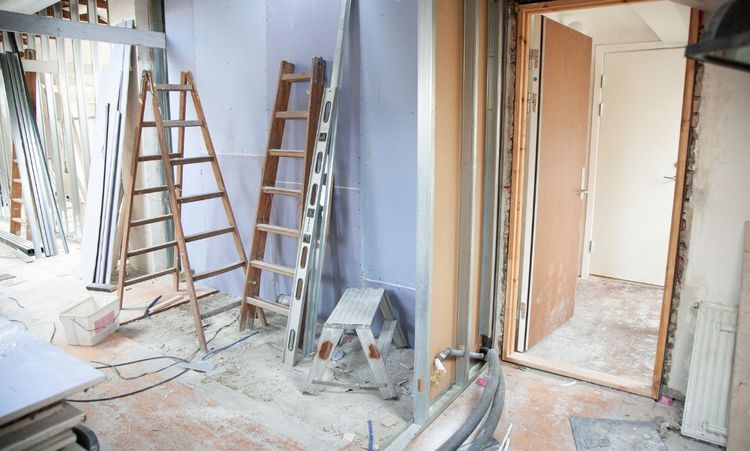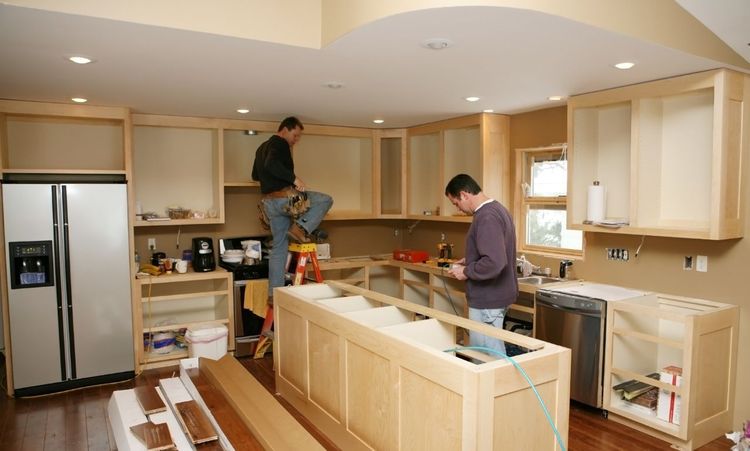How To Finance Your Remodel House
Your dream home renovation is calling, but the price tag might be giving you second thoughts. Here's the thing: financing a remodel doesn't have to drain your savings or max out your credit cards. Smart homeowners know there are multiple ways to fund their renovation projects without breaking the bank. This comprehensive guide will walk you through every financing option available for your remodeling project. We'll cover everything from traditional home equity loans to government-backed programs, helping you make an informed decision that aligns with your financial goals. By the end, you'll have a clear roadmap to bring your vision to life.
Evaluate Your Current Financial Status
Your credit score plays a massive role in determining which financing options are available to you. Most lenders prefer scores above 620, but don't panic if yours is lower – there are still options. Calculate your debt-to-income ratio by dividing your monthly debt payments by your gross monthly income. Lenders typically want this ratio to be below 43%, although some programs allow higher ratios. Your monthly budget should comfortably accommodate additional loan payments without straining you. Review your bank account verification documents and gather recent tax returns. These financial snapshots help lenders assess your ability to repay. Citizens Bank and other major lenders often require proof of income spanning at least two years.
Explore Home Equity Financing Options
Home equity represents the difference between your home's current market value and what you owe on your mortgage. This built-in equity serves as collateral for several financing options that typically offer competitive interest rates. A traditional home equity loan provides a lump sum with fixed monthly payments over a 10-15-year term. These secured loans often feature lower interest rates than personal loans because your home serves as collateral for the debt. The predictable payments make budgeting easier, especially for larger projects with known costs. Home equity lines of credit (HELOCs) work differently. They function like credit cards, giving you access to funds as needed during a 10-year draw period. Variable interest rates mean your payments can fluctuate, but you only pay interest on amounts you use. This flexibility makes HELOCs ideal for renovation in stages or projects with uncertain timelines.
Consider Cash-Out Refinancing
Cash-out refinancing replaces your existing mortgage with a larger loan, letting you pocket the difference for renovation costs. This option is most effective when current interest rates are lower than your original loan rate, allowing you to save money while funding your project. The process involves refinancing up to 80% of your home's value minus your current mortgage balance. If your home is worth $300,000 and you owe $150,000, you could potentially access $90,000 for renovations. Monthly mortgage insurance payments apply if you borrow more than 80% of your home's value. Cash-out refinance loans typically offer the lowest rates among renovation financing options. However, you're extending your mortgage term, which increases the total interest paid over the life of the loan. Consider this carefully, especially if you're nearing the end of paying off your current mortgage.
Look Into Unsecured Loan Alternatives
Personal loans don't require collateral, making them accessible to homeowners without significant equity. Online lenders often offer competitive rates and faster approval times compared to traditional banks. The application process is typically straightforward, with same-day funding possible in some cases. Credit unions frequently offer better rates than banks for personal loans. FourLeaf Federal Credit Union and similar institutions prioritize member service over profit, translating to more favorable loan terms. Their stringent qualification requirements ensure borrowers can handle the debt responsibly. Credit cards may be suitable for smaller projects, but their high interest rates make them expensive for major renovations. Some retail credit cards offer promotional financing but read the fine print carefully. Missing payments or failing to pay off balances before promotional periods end can result in costly interest charges.
Government-Backed Loan Options
FHA-backed loans include several programs designed for home improvements. The FHA 203(k) rehabilitation loan combines purchase and renovation financing into a single mortgage. This option works well for fixer-uppers or homes requiring extensive repairs. Energy-efficient mortgages (EEMs) help finance green energy improvements, such as solar panels or upgraded heating, ventilation, and air conditioning (HVAC) systems. These loans recognize that energy-efficient upgrades reduce monthly utility costs, improving your ability to afford higher mortgage payments. VA loans offer similar benefits for active-duty service members and veterans. These programs often feature competitive rates and reduced qualification requirements. The Property Improvement Loan program specifically targets home improvements, making it easier to access funding for renovation projects.
Compare Interest Rates and Loan Terms
Traditional mortgages typically offer the lowest rates, followed by home equity products, then personal loans. Variable rates usually start lower but can increase over time, whereas fixed rates offer more stable payments. Loan terms affect both monthly payments and total interest costs. Longer repayment periods reduce monthly obligations but increase the total interest paid over the life of the loan. Shorter terms mean higher monthly payments but significant interest savings over time. Don't focus solely on interest rates. Consider origination fees, closing costs, and prepayment penalties. Some lenders offer competitive initial rates but charge high fees that offset potential savings. Calculate the total cost of each financing option before making your decision.
Weigh the Pros and Cons of Financing
Financing enables you to begin your renovation project immediately without depleting your cash reserves. Spreading costs over several years makes expensive projects more manageable, and some loan interest may be tax-deductible if used for home improvements. However, financing adds debt to your monthly budget and extends the time needed to build equity. Interest charges increase the total project cost, and some loans require your home as collateral. Carefully consider your comfort level with additional debt before proceeding. Market conditions affect both loan availability and rates. Economic uncertainty can lead to tighter lending standards, whereas strong markets typically offer more options. Your financial health matters more than market conditions when choosing financing options.
Decide Between Financing and Paying Cash
Paying cash eliminates interest charges and debt obligations, making it the most cost-effective option if you have sufficient reserves. Cash transactions also expedite the renovation process, as there is no waiting period for loan approval. However, using all your cash reserves for renovations leaves you vulnerable to unexpected expenses. Emergency repairs or job loss could create financial stress if you've depleted your savings. Most financial experts recommend maintaining three to six months of expenses in an emergency fund. Consider opportunity costs when deciding between cash and financing. Money invested in renovations can't be invested elsewhere for potential returns. If you can earn more by investing your money than you'd pay in loan interest, financing might be the more intelligent choice.
Plan Your Renovation Costs Carefully
Accurate cost estimates prevent budget overruns and ensure you borrow appropriate amounts. The Remodeling Magazine 2024 Cost vs. Value Report provides nationwide averages for common projects; however, local costs vary significantly. Kitchen renovations typically cost between $25,000 and $50,000 for mid-range projects, while bathroom remodels range from $15,000 to $30,000. Major renovations involving structural changes or additions can easily exceed $100,000. Factor in a 10-20% contingency for unexpected issues. Get detailed quotes from multiple contractors before finalizing your renovation budget. Include permits, materials, labor expenses, and temporary living arrangements if needed. Accurate planning prevents the need for additional financing during the project. Is it Hard to Get a Home Renovation Loan? Renovation loan approval depends on your credit profile, income stability, and the specific details of your project. Traditional lenders typically require credit scores above 620, steady employment, and a reasonable debt-to-income ratio. The application process normally takes 30-45 days from application to completion. Some lenders specialize in renovation financing and offer more flexible qualification requirements. These companies understand construction timelines and work with borrowers who might not qualify for traditional loans. However, specialized lenders often charge higher rates or fees. Prepare for stricter requirements than standard mortgages. Lenders require detailed construction plans, contractor estimates, and evidence that the improvements will increase your home's value. The additional documentation requirements can extend approval times, but they also protect both you and the lender.
What are the 30 Rules of Home Renovation?
The 30% rule suggests limiting renovation costs to 30% of your home's current value. This guideline helps ensure improvements don't exceed the property's potential resale value. For a $300,000 home, this means capping renovation spending at $90,000. However, this rule isn't absolute. High-value neighborhoods support larger investments, while declining areas may not recoup even modest improvement costs. Consider your long-term plans and local market conditions when setting renovation budgets.
Conclusion
Financing your home remodel requires careful consideration of your financial situation, project scope, and long-term goals. Home equity options typically offer the best rates for homeowners with significant equity, while personal loans provide flexibility for those without collateral. Take time to compare multiple lenders and loan products before making your decision. The right financing choice depends on your unique circumstances, risk tolerance, and the specific timeline for your renovation. Remember that the cheapest option isn't always the best – consider factors like payment flexibility, customer service, and total costs. Your dream renovation is within reach with proper planning and the right financing strategy. Start by evaluating your financial health, then explore options that align with your goals and budget constraints.




